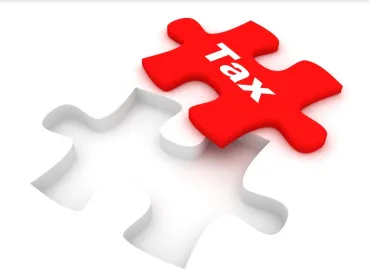On March 28, 2017, the US Tax Court (Tax Court) issued its opinion in Good Fortune Shipping SA v. Commissioner, 148 T.C. No. 10, upholding the validity of Treas. Reg. § 1.883-4. The taxpayer had challenged the validity of the regulation’s provision that stock in the form of “bearer shares” cannot be counted for purposes of determining the more-than-50-percent ownership test under Internal Revenue Code (Code) section 883(c)(1), but the Tax Court held that the regulation was valid under the two-step analysis of Chevron USA, Inc. v. Natural Resources Defense Council, 467 U.S. 837 (1984), and applied it in ruling for the Internal Revenue Service (IRS). We previously discussed the Tax Court’s opinion here. The taxpayer appealed the Tax Court’s decision to the US Court of Appeals for the District of Columbia Circuit (DC Circuit).
On July 27, 2018, the DC Circuit released its opinion in Good Fortune Shipping SA v. Commissioner, Dkt. No. 17-1160. The DC Circuit took an entirely different view from that of the Tax Court, ultimately holding that Treas. Reg. § 1.883-4 “unreasonably interpreted” Code section 883(c)(1). Its holding is based, primarily, on its finding that the IRS failed adequately to explain its reasons for completely foreclosing bearer shares as a form of proof of ownership.
Interestingly, the DC Circuit avoided the question posed by Step One of the Chevron analysis – whether the statute at issue “unambiguously forecloses the agency’s interpretation.” Slip op. at 8 (quoting Nat’l Cable & Telecomms. Ass’n v. FCC, 567 F.3d 659, 663 (D.C. Cir. 2009)). Instead, the Court said that it would “give the IRS the benefit of the doubt and assume that § 883 does not unambiguously foreclose its interpretation.” Id. at 8. It “ma[d]e this assumption because even proceeding to Chevron Step Two, we conclude that the IRS’s interpretation of § 883 in [Treas. Reg. § 1.883-4] is unreasonable and cannot stand.” Id.
According to the DC Circuit, “[a]t Chevron Step Two, we ask whether the IRS’s interpretation is ‘reasonable.’” Slip op. at 8 (citing AT&T Corp. v. FCC, 220 F.3d 607, 621 (D.C. Cir. 2000)). This means that the Court “consider[s] whether the interpretation is ‘arbitrary or capricious in substance, or manifestly contrary to the statute.’” Id. (quoting Mayo Found. for Med. Educ. & Research v. United States, 562 U.S. 44, 53 (2011)). The Court’s focus, then, was on “‘whether the [agency] has reasonably explained how the permissible interpretation it chose is “rationally related to the goals of” the statute.’” Id. (quoting Village of Barrington v. Surface Transp. Bd., 636 F.3d 650, 665 (D.C. Cir. 2011)).
Observing that “[b]earer shares are a valid form of ownership, and [Treas. Reg. § 1.883-4(b)(1)(ii)] acknowledged as much,” the DC Circuit agreed with the taxpayer – all of whose shares were bearer shares – that “the IRS’s abject refusal to attribute ownership for bearer shares risks ‘conflat[ing] proof of ownership with the meaning of ownership.’” Slip op. at 10. Thus, the Court said, even if Code section 883 gives the IRS broad discretion to dictate how to prove ownership, “it hardly authorizes the agency to categorically deny consideration of a recognized form of ownership based on only a single, undeveloped statement that it is ‘difficult[]’ to reliably track the location of a given owner.” Id. Indeed, the Court conceded, “[i]f the IRS found that the transferable nature of bearer shares made substantiation impossible, we might conclude that [Treas. Reg. § 1.883-4] reasonably implemented that finding.” Id. at 10-11. But, as the Court noted, the IRS never made such a finding. The regulation’s “unsubstantiated treatment of ownership ‘comes close to violating the plain language of the statute’ – indicating that [Treas. Reg. § 1.883-4] is unreasonable at Chevron Step Two.” Id. at 11 (quoting Goldstein v. SEC, 451 F.3d 873, 881 (D.C. Cir. 2006)). Ultimately, in the view of the DC Circuit, “the IRS here chose to “‘paint[] with such a broad brush’ that it ‘failed adequately to justify’ its categorical rule excluding the use of bearer shares in qualifying for the tax exemption in § 883.” Id. at 16-17 (quoting Goldstein, 451 F.3d at 883.
Accordingly, the DC Circuit reversed the Tax Court’s decision and directed it to “vacate [Treas. Reg. § 1.883-4’s] provisions prohibiting the consideration of bearer shares.” Slip op. at 17.
Practice Tip. Although neither party mentioned the Administrative Procedures Act (APA) in their appellate briefs, the three-judge panel at oral argument questioned the adequacy of the explanation provided by the IRS at the time the regulations were promulgated. And, although the DC Circuit did not specifically address whether the IRS had complied with the APA when it promulgated Treas. Reg. § 1.883-4, the Court’s opinion nonetheless arguably bolsters reliance on an APA-based attack on a regulation’s validity. The DC Circuit’s analysis, which relies heavily on the explanation – or, in this case, the lack of an explanation – offered by the IRS when it issued the regulation in question, underscores the validity of an APA-based approach. Although the DC Circuit says that it is applying Chevron’s two-step analysis, it does so using an approach that mimics the analysis under the APA.




 />i
/>i
